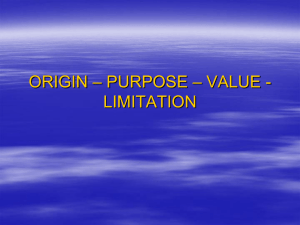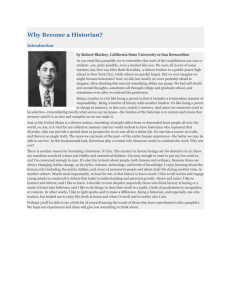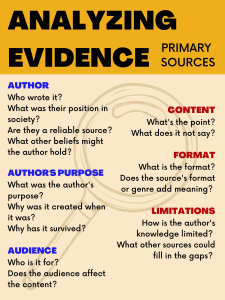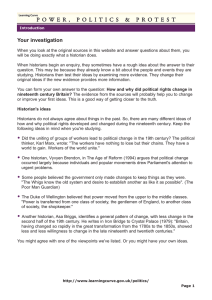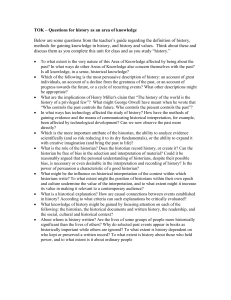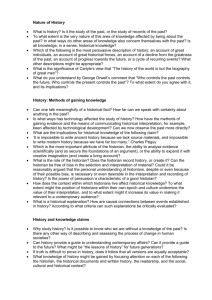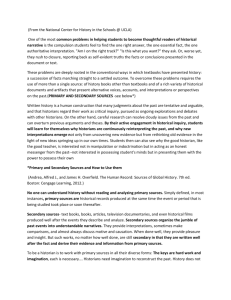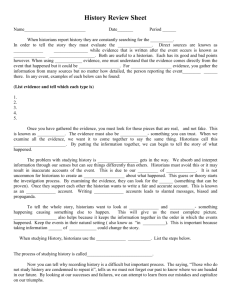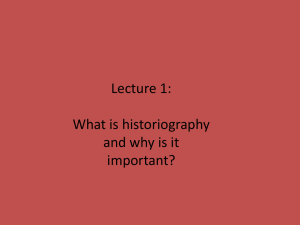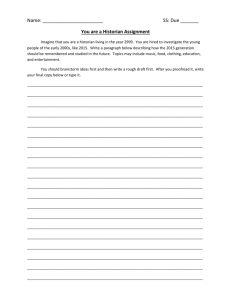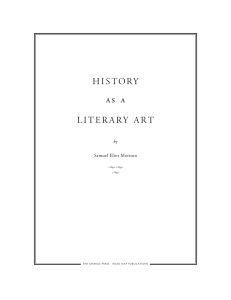ORIGIN – PURPOSE – VALUE
advertisement
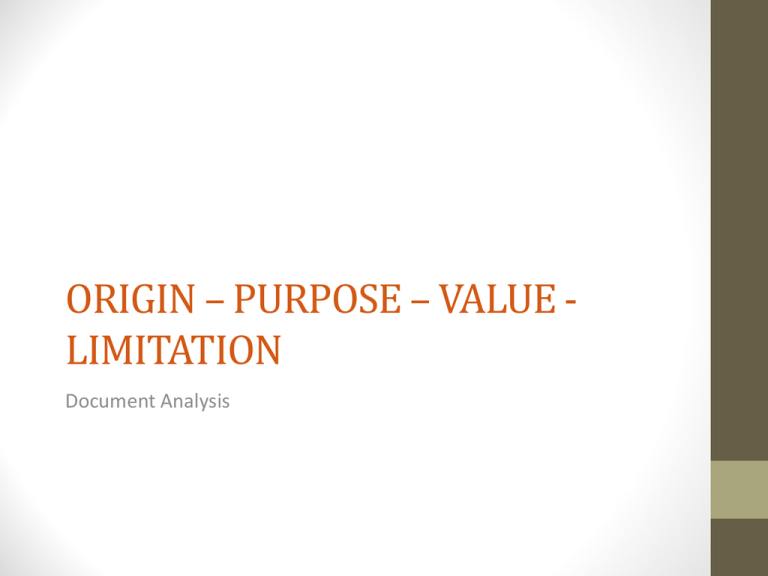
ORIGIN – PURPOSE – VALUE LIMITATION Document Analysis ORIGIN • When and where was the source produced? • Author/creator? • Primary or secondary source? ORIGINS • Date of original publication • Date of any additional additions • Location of publication • How might the time, place, and author of this work affect the work produced? • For example: George Washington writing about Valley Forge will have a different interpretation than General Cornwallis. Primary Sources • Closest to the event • Any examples? • Original documents, creative works, and artifacts • Ex: Eyewitness accounts, diaries, records Secondary Sources • Based on primary sources-one step removed from event • An researcher’s (historian’s) interpretation of the primary sources • Examples? • Magazine or newspaper articles, history essays or books, biographies Tertiary Sources • Made up of secondary and primary sources • One more step removed • What could be tertiary? • High school textbooks, encyclopedias Beware! • The lines can be blurry PURPOSE • Why was source produced? • What is the immediate historical context for it? • Who is the intended audience? • What does it “say” at surface level? • What does it say below the surface? PURPOSE Why did the author write/draw/compose this work? * Consider the audience * Does this author have something to hide? * Is he/she trying to convince anyone of something? * For example: Is this a textbook that is written to inform a high school student or a press conference given to reassure the Canadian public? VALUE • What can it tell historians about the timeperiod or topic? • Flashlight in a dark room – what does the source illuminate for the historian? • Use origins and purpose to help • Important ideas: • Perspective of creator based on position, influence, geography, relationships, etc. • Time period importance – contemporary or produced at a later date (primary v. secondary)? • Public v. private source VALUE • How is this source useful to your investigation? • What is the author’s purpose and how can that perception aid your investigation? • Has this work been particularly well researched? • Is this a secondary source? If so, does that allow the author distance to create a subjective argument? • Is this a primary source? If so, does that allow the author to provide a viewpoint that no one else can (since they experienced it for LIMITATIONS • What can’t it tell historians about the time period or topic? • Flashlight/dark room – What might be outside the beam? What can we not see? • Important ideas: • What the source is! • Bias ( opinion ) of the source based on social class, gender, race, position, nationality, religion, etc. • Time of production: again primary or secondary LIMITATIONS • What about this source hinders your investigation? • Does this author only present part of the story? • Is this a secondary source? If so, does the author deliver only part of the story? • Is this a primary source? If so, what viewpoint does the author present? What is missing from his/her side of the story? Limitations Explained • The task here is not to point out weaknesses of the source, but rather to say: at what point does this source cease to be of value to us as historians? • With a primary source document, having an incomplete picture of the whole is a given because the source was created by one person (or a small group of people), naturally they will not have given every detail of the context. Do not say that the author left out information unless you have concrete proof (from another source) that they chose to leave information out. • Also, it is obvious that the author did not have prior knowledge of events that came after the creation of the document. Do not state that the document “does not explain X” (if X happened later). http://edublogs.misd.net/khall87/using-opvl-with-documents-guide/ • Origins? • Purpose? • Value? • Limitations? Example-Don’t write this down • A historian is analyzing a private entry in President Truman’s diary concerning the possible use of atomic weapons on Japan. The following is a general OPVL review. More specific analysis would make reference to details in the document. • Origin: President of the US, a private, primary source. Context = World War II and the aftermath of Germany’s surrender and the looming invasion of Japan. • Purpose: personal journal meant for later reflection and recall. Private, not public. Interpretation of what it says (literally) and what it may reflect would be based on specific document. Example • Value: private diary entry and thus likely to be honest and revealing; from one of the major leaders concerned with making the decision. Again, interpretations and explanations would be based on specifics within the document. • Limitations: only the private perspective of a high ranking government official from the US. May not reflect other individual’s opinions who were also involved in the decisionmaking process. Informs about the immediate decision but not later concerns. May reflect but is not the official public US government policy position or necessarily the same as US public opinion on the issue. Read the Iroquois Legend and analyze the document
